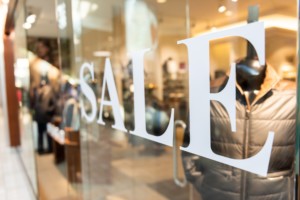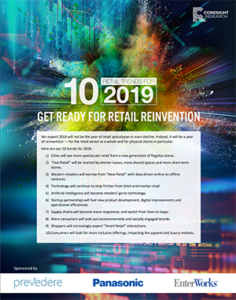Last Updated: December 9, 2021
With 2019 well underway, retailers may be cautiously optimistic after a healthy 2018 but still nervously watching the economy for retail economic indicators to predict consumer spending and shopping behavior.
Last year, US retailers benefited from a strong U.S. economy, capped by the best holiday shopping season in six years with the National Retail Federation (NRF) reporting that US retail sales grew 4.6% in 2018. Uncertainty in the economy is on the rise due to the mixed earnings for some retailers, coupled with the bankruptcies of several high-profile chains like Payless, Gymboree and American Apparel, all of whom have emerged from a Chapter 11 only to file a second time and shutter their doors. In addition, current global trade and economic tensions directly contribute to a general feeling of incertitude.

As more shoppers move to buy online versus shopping in brick and mortar stores, additional retailers could meet the same fate as those mentioned above. According to Coresight Research, 5,524 US stores closed last year, and while that number was down 32% from the prior year, the number of store closure announcements in 2019 is up 23% over the same period in 2018.
With so many factors influencing the health of the industry this year, let’s look at just a few which are encouraging retail economic indicators.
3 Retail Economic Indicators to Predict Consumer Spending
- The growth rate of the U.S. gross domestic product (GDP) is the most popular indicator of the nation’s overall economic health. Currently, the GDP is riding above short-term averages, with strong year-over-year growth.
- Unemployment remains at a near record low, up just slightly to 4% in January 2019 from a 49-year low of 3.7% in November 2018. With more people working, we can come to the reasonable conclusion that more people are spending.
- Despite only sluggish gains in wage growth consumer spending has increased, a scenario which is demonstrative of Americans’ confidence in the overall economic picture.
Looking back at 4th quarter 2018 the economy appears to be in good shape; however, there are some retail economic indicators to keep an eye on as we move into 2019. Let’s look at three very important economic indicators for retailers to watch.
- Disposable personal income is the amount of money that household have available for spending and saving after income taxes have been accounted for, also known as DPI. The portion of their DPI that consumers are forced to spend on necessities like housing, utilities, gasoline, healthcare and food ultimately impacts their ability to spend money on non-essential items like vacations and luxury items. News this week that the cost of some household basics like diapers, toilet paper and cat litter is going up may negatively impact discretionary spending.
- Wage growth is an indicator of the health of consumer spending. Typically, in times of low unemployment, like the current economy, wages go up. However, current wage growth is not outpacing inflation in the long run. Moving into 2019, inflation-adjusted wage growth will be important to watch, posing a significant challenge to the overall economy as manufacturing slows.
- The number of unemployed workers in the labor force for every job opening in the U.S. is an indicator of the competitiveness of the job market and the likelihood of consumers finding jobs. Currently, the unemployment rate is near a 50-year low. This is not just indicative of the probability of consumers finding jobs, but also of higher wages, given the competition to get new employees in the door.
While retailers should be aware of these three retail economic indicators to predict consumer spending, every company has a unique set of external factors that influence performance. By including external indicators in their planning and forecasting process, retailers can better prepare for what is to come. Utilizing a solution like Prevedere’s Prevedere predictive analytics cloud, brands can analyze data faster and with more accuracy.
Making informed decisions based on forecasting now can help companies more accurately predict consumer spending and shopping habits. Without keeping an eye on the future, brands may find themselves in a similar position to those closing their doors.
How can retail businesses prepare themselves for what could very well be an uncertain 2019 forecast? For more on the State of the Economy in 2019, see Prevedere’s report here.
***
Prevedere is a proud sponsor of Coresight Research’s 10 Retail Trends for 2019. Coresight expects 2019 will not be the year of retail apocalypse or even decline. Instead, it will be a year of reinvention — for the retail sector as a whole and for physical stores in particular.
Download this report to see the top 10 retail trends for 2019.
Take a look at some of Coresight’s Top trends for 2019:
- Cities will see more spectacular retail from a new generation of flagship stores.
- “Fast Retail” will be marked by shorter leases, more shared spaces and more short-term stores.
- Western retailers will borrow from “New Retail” with data-driven online-to-offline ventures.
- Technology will continue to strip friction from brick-and-mortar retail.
- Artificial Intelligence will become retailers’ go-to technology.
- Startup partnerships will fuel new product development, digital improvements and operational efficiencies.
Additional Resources
